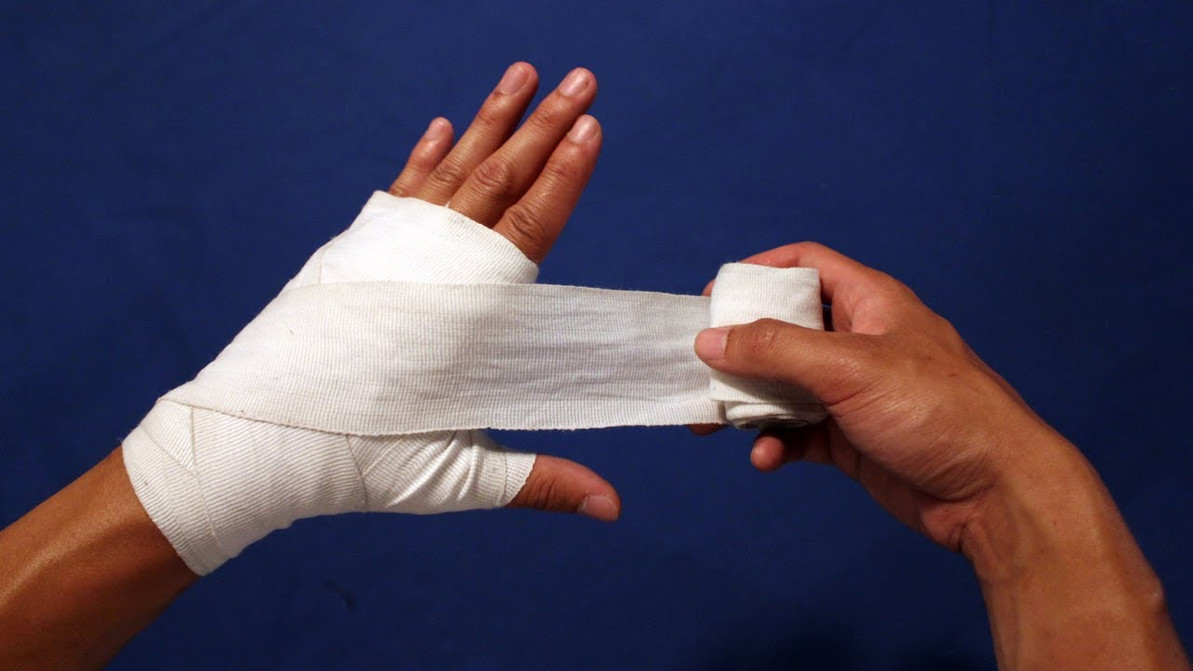The Purpose of Hand Wrapping
Hand wrapping is usually the last thing a fighter thinks about. However, your ability to punch lies just as much in your hand wrapping as it does in your mind. Without a good hand wrap, you may be open to injury and hesitate to take a punch.
The History of Hand Wrapping
The first time that hand wrapping was mentioned in history was in Ancient Greece in 688 B.C.E. Boxing was a part of the very first Olympics and was often used in gymnasiums among the Grecians as part of their education as young men. Back then the Ancient Greeks used strips of oxhide softened with olive oil, called himantes, to wrap their hands.
Boxing was actually outlawed in Rome after 500 C.E. The sport went underground, and bare-knuckle matches became the new norm. In 1743, a rudimentary padded glove was used during training but was never used in any professional fights. In 1867 this all changed when the 9th Marquess of Queensberry, John Douglas, endorsed the code of modern boxing and gloves were finally considered as normal boxing equipment. From the 19th century up to the 1920s hand wrapping became popular. In the 1920s it became the standard for glove boxing to protect the hands.
In the 1920s, gauze and tape became the norm for hand wrapping. With the invention of masking tape, boxers had the ability for the first time to have an adhesive to secure the gauze.
The Purpose of Hand Wrapping
The purpose of hand wrapping has a few objectives.
- Is to provide a protective barrier for the fighters’ hands. The hand structure consists of small joints and small bones that are fragile and subject to fracture from the impact of repetitive punches. Hand wrapping also protects the tendons, muscles and cushions the impact of the wrist.
- Is to keep the loose or moving joints in place. Hand wrapping provides restriction for these joints, so the shock can be absorbed and redistributed across the entire hand. If your joints are moving around when the fist makes contact with an object, a fracture could easily occur. Additionally, there could also be other injuries to the tendons and muscles. These injuries could interfere with your everyday activities.
How to Wrap Your Hands
You will need 180” cotton wraps for average size hands or 120” for smaller hands. Mexican wraps are semi-elastic and are also acceptable wraps for you to use. However, they will break down faster than cotton wraps.
Click here to see a demonstration https://www.youtube.com/watch?v=-kgVnNAHLLM
Click here to see a Traditional Mexican Handwrap demonstration https://www.youtube.com/watch?v=9qRHKukOvfs
Mistakes Made in Wrapping
Using too much tape and gauze can cause a problem for a fighter. Tape and gauze are porous and can allow moisture to seep through. This can cause sweat to accumulate, adding additional weight to a fighter’s hands and gloves. Additional weight to a boxer’s gloves means their punches will become slower.
Another mistake you can make is not understanding the anatomical structures of the hand when wrapping them. Also, be mindful of your medical history when wrapping. Any injuries or other hand, wrist or finger issues should be addressed before wrapping to better protect them.
Last, but not least, choose the right wrap. Wraps that are thick and inflexible don’t secure the hand properly when making a fist.
Hand wrapping is an important process before training or getting into the ring. Lack of proper wrapping can impede your performance. Make sure that you follow the tips above and practice them.
Remember, if hand wrapping is a challenge for you, your coach is there to help.
So get your hands wrapped up and get in the ring!
Recent Posts
-
How to Fill a Boxing Bag
Filling a punching bag is straightforward, but using the right materials and technique is key to ens …26th Jun 2025 -
A Tale Woven in Threads: Unraveling the History of the Dogi
In the world of martial arts, the dogi stands as a symbol of discipline, tradition, and resilience. …1st Mar 2024 -
History and benefits of Muay Thai shorts
Muay Thai, the art of eight limbs, is not only a martial art but also a cultural phenomenon deepl …21st Feb 2024





